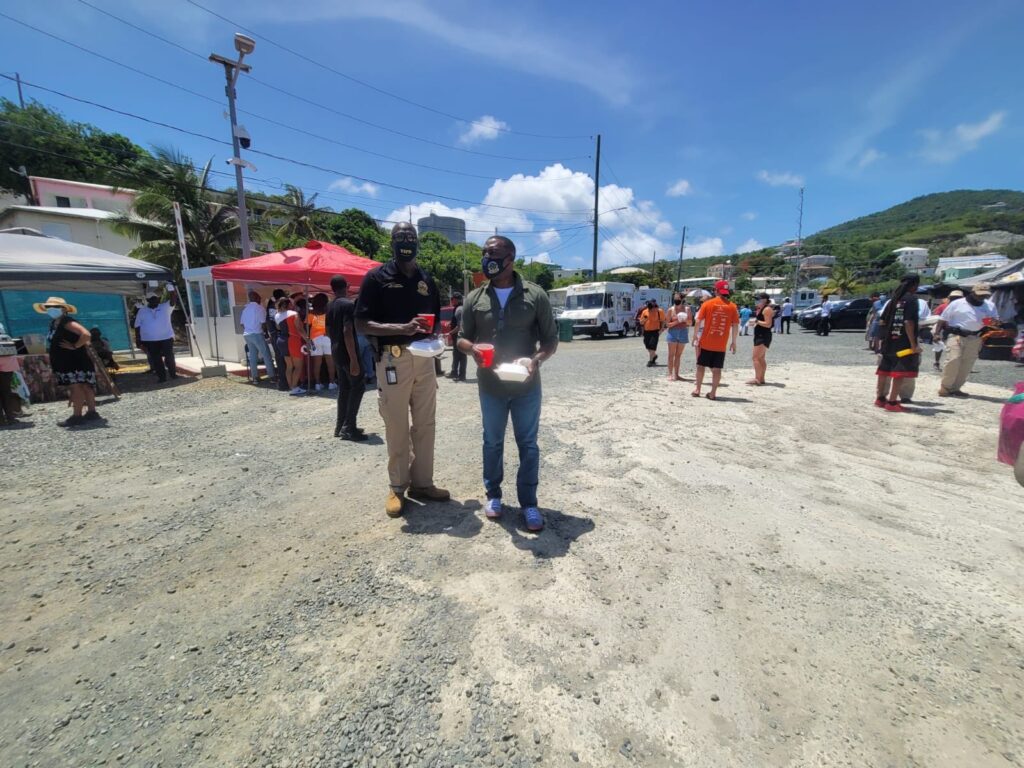CRUZ BAY — In many cultures and geographic regions, it’s customary to shoot guns into the air to celebrate the 4th of July or other holidays. The purpose of what is called “celebratory gunfire” is to make loud noise to mark a joyous occasion.
However, what people don’t often realize is that those bullets will eventually come down, and when they do, they pose a deadly threat.
Acting Police Commissioner Mario Brooks said this weekend that as we begin to prepare for this patriotic holiday weekend, “remember what goes up, must come down. Celebratory gunfire is not only dangerous, but could be deadly. It can take a life.”
There are myths out there that bullets shot into the air go into outer space, or descend with enough of a drag that they are not hazardous. Neither of these beliefs is true. While only a small percentage of bullets shot in the air will actually hit a person or a pet at the velocity to cause serious damage or death, it does happen (in addition to property damage to cars, homes, etc.)
A study by the Center for Disease Control and Prevention shows that, on average, two people die and 25 more are injured on New Year’s Eve in Puerto Rico, where celebratory gunfire is common. These injuries happen all across the United States and in many other parts of the world as well. Unfortunately, it is also common here in Houston.
As a trauma surgeon, I have witnessed such cases. Just last year, a woman was rushed to our ER after she was struck in the back of the head with what she described as feeling like a “cannonball. No one heard a gunshot. No one saw any gun fired in the vicinity, but we found a copper bullet lodged deeply in the top of her skull.
Fortunately, she did well after a neurosurgery team operated on her acute skull fracture. Bullets from celebratory gunfire, sometimes referred to as “falling bullets,” can travel up to a mile away through the air before they might hit a person. Most often, people are hit on the head, shoulders, or feet.
Other notable injuries and deaths due to celebratory gunfire include that of Armando Martinez, a Texas State Representative who was hit in the head with a stray bullet on Jan. 1, 2019.
Two years before that, 43-year-old Javier Suarez Rivera was struck and killed by a bullet just minutes after ringing in the new year when he stepped out of his home in Houston.
On New Year’s Day in 2013, a 10-year-old girl, Aaliyah Boyer, died of injuries she received after being hit by a falling bullet in Maryland. Sadly, there are many more of these tragic stories.
Celebratory gunfire is illegal across the United States, with crime classifications varying from a misdemeanor to a felony. In Texas, random gunfire is a Class A misdemeanor punishable by up to one year in prison and a hefty fine. If someone is injured or killed by that bullet, it is a felony.
You may ask, “If this is illegal, why are guns fired into the air at military funerals and events?” The key difference here is that those planned demonstrations use blanks, not live ammunition. Most community celebratory gunfire uses live rounds, which is what creates these deadly consequences.
Am I suggesting you walk around with a Kevlar vest and helmet on Dec. 31? No. But I do recommend you share the deadly risk of celebratory gunfire with anyone who is thinking of engaging in this pastime. As I’m sure the families of those who have been killed or injured can tell you – it’s not worth it.
If you or someone you know wants to make noise for this holiday weekend, consider the countless other safe and legal alternatives, such as banging pots and pans.

